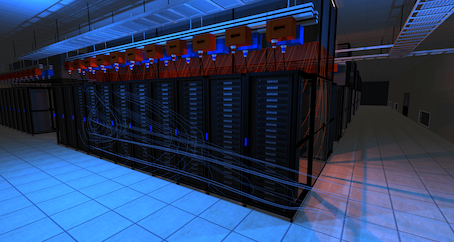From my vantage point in the EDA foxhole it can be easy to forget that Cadence also has interests in much broader technology domains. One of these is in data center modeling and optimization, through their Cadence Reality Digital Twin Platform. This is an area in which they already have significant track record collaborating with companies like Switch, NV5, Nvidia and others, with focus on design modeling for giant data centers. Cadence recently released a report based on a survey of hundreds of IT, facility, and business leaders on what priorities and concerns they see for future data center evolution. The report covers a lot of detail. I will highlight here just a few of the points I found intriguing, especially from my limited understanding of the data center world.

Modeling data centers
While the Cadence report jumps straight into business perspectives, I want to take a couple of paragraphs to elaborate on the purpose of modeling. Electronic systems (servers, storage, and networking in a data center) dissipate power in the form of heat. Excess heat causes loss of performance and, in extreme cases, damage, which must be mitigated through cooling. Forced air cooling (like AC) has been the standard approach for traditional heat density found in most data centers. However, with the emergence of AI compute, where power densities are climbing towards 100X, there is growing demand for more energy-efficient liquid-based cooling. Heat and energy/sustainability problems have become even more pressing as these power-hungry AI servers consume more of the data center footprint.
Planning compute resource (racks, etc) placements together with cooling resources (fans, vents, liquid cooling support, plumbing and heat exchangers) is rather like a place and route problem, except that objects to place are racks and routing is convective/ conductive/ radiative heat flow away from hot devices in 3 dimensions with flows through vents, up, around and above racks, and through cold plates and piping for liquid cooling. Hence the need for modeling.
The need to evolve
Whether for on-premises data centers, cloud services, or colocated services (guaranteed capacity on my hardware in your data center and you take care of service), almost all users/ suppliers of data center services want to see continued innovation. (The report focuses on hardware, the stuff that consumes capital cost and power, not software layers enabling hybrid cloud for example.)
Unsurprisingly, how much that wish translates into action depends on whether the service provider is a profit center (a cloud or colocation service) or a cost center (on-premises). Profit centers must keep moving ahead to stay competitive, whereas cost centers must justify investments against imperfectly quantified future benefits. Also no surprise, much of the demand to evolve comes from a need to increase energy efficiency and a need to add or increase AI support, two requirements fighting against each other.
Adding to the challenge, while some innovation can be introduced incrementally, significant improvements demand more significant capital investment, for example investments in local renewable energy options, high-density servers, and liquid cooling which may require major infrastructure rework. A big step forward when implemented but a big cost to get there.
Innovation at this level almost certainly demands adding expert staff, for AI certainly, and for digital twin planning – these kinds of improvements must be grounded in certainty that they will deliver in practice.
It’s easy to see how for smaller data centers an ardent desire to improve can run into a brick wall of budget and staffing constraints. Even hyperscaler centers must plan carefully to maximize continuing value of existing assets. One interesting insight from the report is that data centers in South America are claiming high confidence in their ability to innovate, I would assume because many of these are quite new and have been able to design and hire from scratch to meet state-of-the-art objectives.
Meaningful improvements must start with digital twins
For small enterprises, AI needs may already be pushing some compute loads (at least training loads) to the cloud or colocation services.
For larger enterprises there are good reasons to maintain and expand on-premises (and perhaps colocation) options, but they must also step up to some of the kinds of investments already being made by profit-driven data centers, if not at the same scale. Meanwhile profit-based data center enterprises are already there and fully familiar with these needs.
Whatever the business motivation, any enterprise planning new or significantly upgraded capability is doing so using digital twin modeling. Automakers, aircraft makers, factory builders and others are all moving to digital twins to optimize and continue to refine the efficiency of their businesses. This is an unavoidable component of planning today.
Interesting white paper. You can access it HERE.
Also Read:
Designing and Simulating Next Generation Data Centers and AI Factories
How Cadence is Building the Physical Infrastructure of the AI Era
Big Picture PSS and Perspec Deployment
Share this post via:




Comments
There are no comments yet.
You must register or log in to view/post comments.